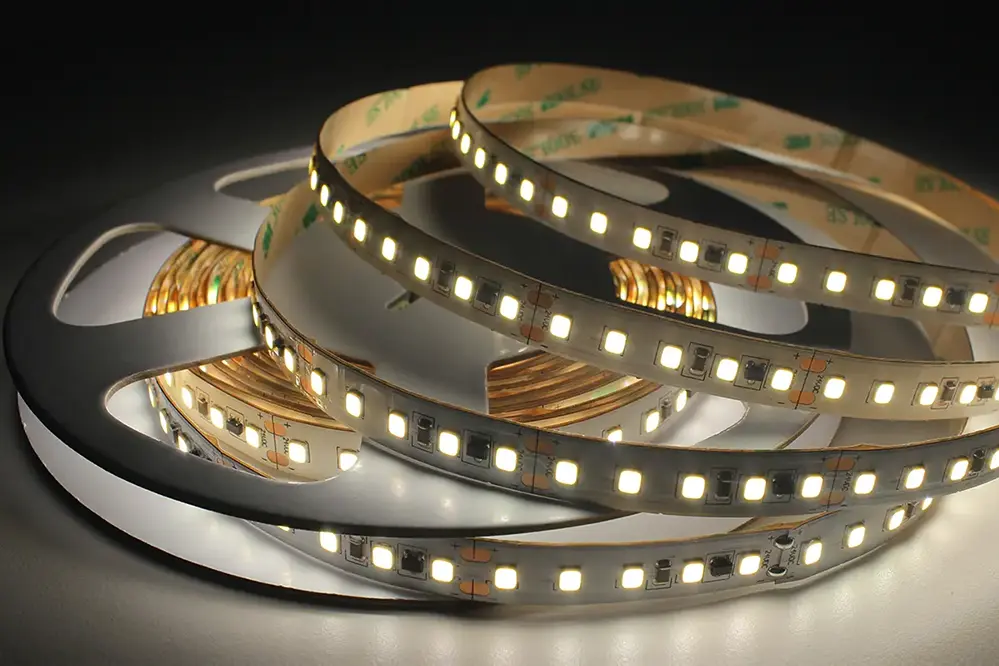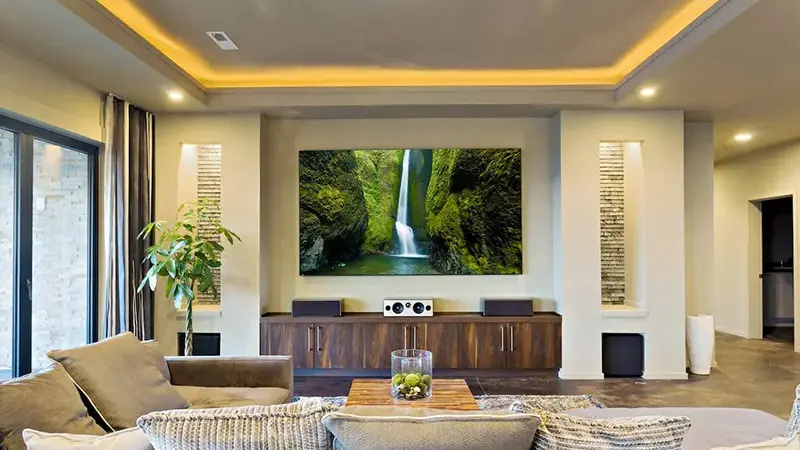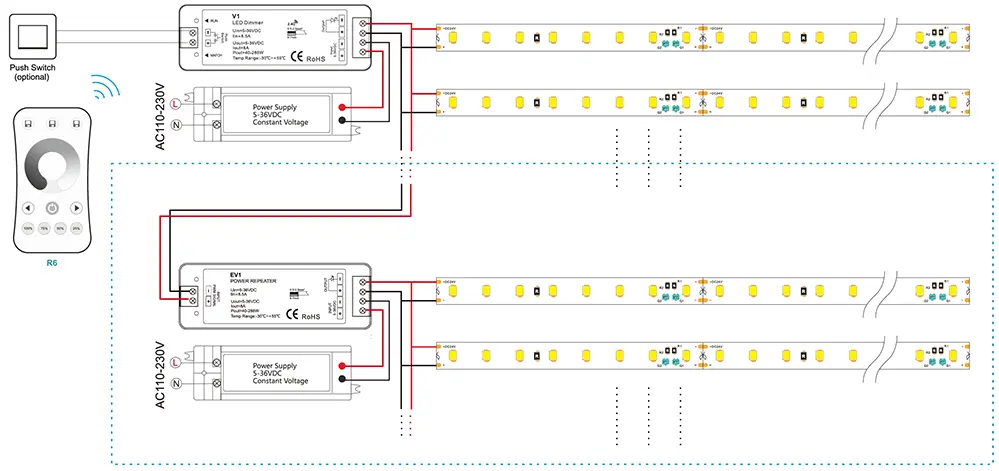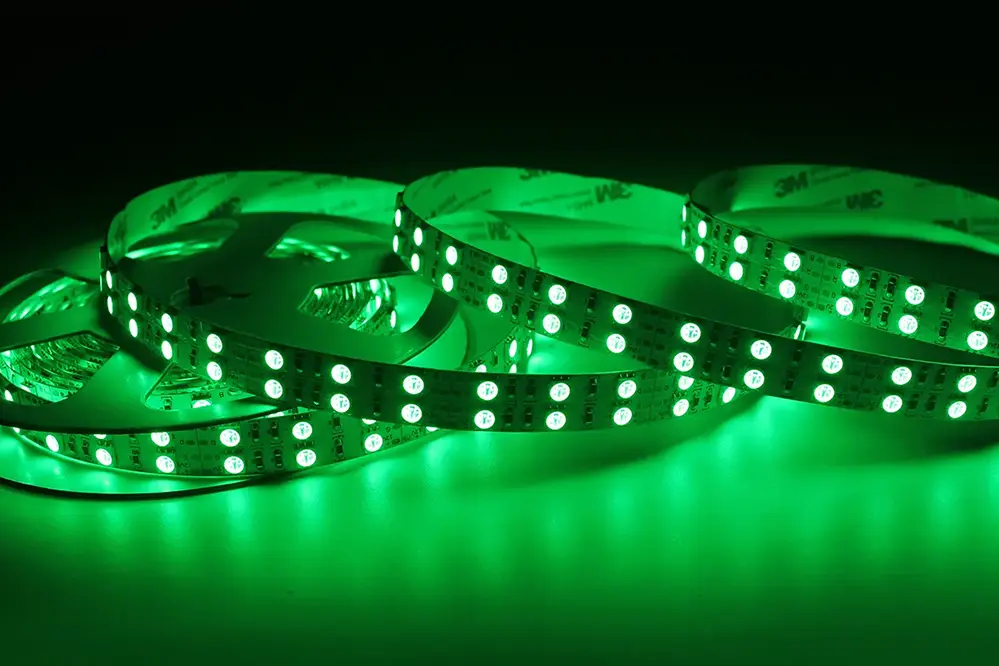Discover the truth about LED strip lights and their electricity usage. If you’re wondering whether these popular lighting solutions consume a significant amount of electricity, you’ve come to the right place. In this blog post, we’ll provide you with a comprehensive answer backed by expert knowledge and data.
LED strip lights are highly energy-efficient, consuming significantly less electricity compared to traditional lighting options. These lights use an average of 4.8 to 24 watts per foot, depending on the brightness level and color temperature. With their low power consumption, LED strip lights are an excellent choice for both residential and commercial applications.
In the following sections, we’ll delve deeper into the factors that influence the electricity usage of LED strip lights. We’ll explore the benefits of LED technology, discuss the impact of brightness and color temperature on energy consumption, and provide tips on optimizing the efficiency of your LED strip lighting setup. Keep reading to gain a comprehensive understanding of LED strip lights and their electricity usage.
LED Strip Lights Efficiency

LED strip lights exemplify energy thriftiness through their remarkable lumen-to-watt ratios, delivering bright illumination with significantly lower energy consumption compared to traditional incandescent or halogen bulbs. Their intrinsic energy-saving design is augmented by the advent of advanced LED technologies, reducing the ecological footprint and operational costs.
Additionally, these striplights encompass the advantage of tailored lengths and flexibility, ensuring precise application without surplus energy waste. Their positional accuracy allows for targeted lighting schemes, minimizing the energy expended in areas that necessitate less intensity or focus.
Comparing LED to Traditional Lighting
LED technology excels in efficiency, casting intense light while sipping electricity, starkly contrasting traditional incandescent bulbs that are far less efficient and consume more power.
Traditional lighting technologies such as incandescent or halogen lamps exhibit considerably higher power consumption rates due to lower lumen-per-watt efficiencies. LEDs transform a greater proportion of energy into visible light, which results in brighter spaces using less electricity.
LED lights have revolutionized illumination, consuming up to 85% less energy than incandescent bulbs.
While incandescent bulbs dissipate much of their energy as heat, LEDs maintain a lower operating temperature, thereby reducing cooling costs. Adding to their appeal, LEDs possess a prolonged lifespan that outstrips their traditional counterparts by thousands of hours.
Factors Affecting LED Energy Consumption
LED strip lights are remarkably energy-efficient.
The power consumption of LED strip lights is influenced by several key components. Among these is the power draw per meter, which is determined by the LED density, or the number of LEDs per meter, and the wattage of individual LEDs. Additionally, the color of the LEDs can impact the overall energy consumption, with white-light-emitting diodes typically drawing more power than colored LEDs.
Brightness levels are directly linked to energy consumed.
Another influential factor is the LED strip’s voltage and current specifications – typically 12V or 24V – which can alter the total energy consumed by the device, as well as the system’s overall efficiency. Moreover, how the LED strip is utilized can significantly affect its power usage, such as the operating duration and intensity settings.
The efficacy of LEDs also comes into play.
Furthermore, the electrical efficiency of the LED strip’s driver – the device that regulates the power supply – will have a bearing on the total energy consumption. Advancements in driver technology have seen constant improvements, with many models designed after the knowledge cutoff in early 2023 offering high efficiency and reduced energy waste. These devices ensure the consistency of power delivered to the LED strip, maintaining illumination while optimizing energy consumption.
Calculating LED Strip Power Usage

To ascertain the power consumption of LED strip lights, one must consider multiple parameters, including the strip’s wattage per unit length, typically denoted in watts per meter (W/m). When multiplied by the total length of the LED strip being used, this yields the total wattage required. Factoring in the duration of use, you can then calculate the energy consumption in kilowatt-hours (kWh), which gauges the electricity usage over time. Moreover, the power supply’s efficiency must be accounted for, which can introduce a degree of variance to the power usage calculation. By meticulously combining these aspects, one can obtain a fairly precise estimate of an LED strip’s electricity demand.
Understanding Wattage and Length
The electricity consumption of LED strip lights hinges on their wattage and the length of strip used.
- Assess the Wattage Per Meter: Determine the wattage specified per meter of the LED strip.
- Calculate Total Wattage: Multiply the wattage per meter by the total length of the strip in meters.
- Consider Usage Duration: Factor in how long the lights will be on to ascertain total energy consumption.
- Account for Power Supply Efficiency: Include the efficiency rating of the power supply in the calculation.
By comprehending these factors, we establish the foundation for evaluating the electrical demand of LED strips.
Incorporating the aforementioned components grants a robust framework for estimating power usage.
Real-Life Energy Consumption Examples

In residential settings, LED strip lighting often serves both functional and decorative purposes.
- Kitchens: Under-cabinet lighting averaging 10 meters with a wattage of 14.4W/m could consume 144 watts when in use.
- Living Rooms: Accent lighting behind televisions or around crown moldings, typically a 5 meter strip rated at 7.2W/m, would use about 36 watts.
- Bedrooms: Ambient LED strips for mood lighting, say 3 meters at 14.4W/m, account for 43.2 watts.
- Gaming Rooms: Enthusiasts using vibrant, color-changing LEDs for their gaming setups, utilizing a 5 meter strip with higher power LEDs of 14.4W/m, can expect a consumption of 72 watts.
In commercial spaces, the application scales up significantly.
Energy usage varies with the wattage of the LED strip and the cumulative length in operation.
An understanding of these real-life applications underscores that while LED strip lights can indeed consume electricity, their relative efficiency makes them a favorable choice compared to traditional lighting solutions.
Minimizing LED Electricity Consumption

To effectively reduce the electrical draw of LED strip lights, meticulous selection and smart usage practices are paramount. Opting for strips with a lower wattage per meter can yield appreciable energy savings without compromising luminosity. Employing dimmer switches or motion sensors further truncates power usage by allowing the lights to operate only when necessary. By aligning LED use with mindful consumption patterns, the energy requirement plummets, underpinning an economical and ecologically conscious lighting solution.
The Role of Dimmers and Controllers
Dimmers and controllers are integral to modulating LED strip light intensity and, correspondingly, their power consumption. These devices can dramatically reduce energy usage by adjusting light output according to need.
Strategically positioned sensors working in tandem with controllers can initiate or curb LED activity, optimizing electricity use. This harmonizes illumination with occupancy and ambient light levels, further conserving energy.
By tailoring the brightness of LED strips through programmable controllers and dimmers, one can create an ambiance suitable for varying circumstances while concurrently minimizing power draw. This adaptability not only enhances lighting flexibility but also reduces the ecological footprint of a lighting system.
Through precise control and scheduling capabilities, these tools allow users to define periods of peak and minimal usage, aligning light performance with usage patterns. This capability does not merely lead to a reduction in power consumption; it extends the longevity of the LEDs by mitigating thermal stress and wear over time. Consequently, a “set and forget” approach can be counterproductive, as continuous maximum brightness is rarely warranted.
Selecting the Right LED Strip
Consider the lumens, not just wattage.
Assessing LED strips requires attention to luminous efficacy. It’s crucial to look beyond wattage and consider how many lumens are produced per watt of electricity used. Efficient LED strips typically have high lumens per watt, demonstrating they emit more light using less power. Therefore, while wattage provides an indication of power consumption, lumens per watt reveal the efficiency of the light output per unit of electrical power consumed.
Verify compatibility with dimmers and controllers.
Develop a nuanced understanding of color temperature.
Analyze the LED density for even light distribution.
Ensure adherence to relevant certification standards.
LED Lifespan vs. Energy Savings
When examining the core benefits of LEDs, longevity stands in the vanguard, with energy efficiency as its steadfast ally. At once, these luminaires deliver tens of thousands of hours of illumination while maintaining low electricity consumption. The symbiosis of extended lifespan and reduced power draw not only culminates in significant energy savings but also underscores a progressive shift towards sustainable lighting practices.
The exceptional endurance of LEDs minimizes the frequency of replacements, thereby reducing waste and associated environmental impacts. Manufacturers that harness cutting-edge technologies ensure these diodes operate well within their thermal limits, promoting stability and persistence. This diligence enhances the return on investment and exemplifies the intersection of ecological responsibility and economic prudence.
Longevity Contributing to Lower Costs
LED strip lights epitomize efficiency, transcending mere operational lifespans to effectuate thrift.
In this paradigm, the sturdiness of LEDs equates to infrequent procurement, streamlining the long-term budget. Over years, fewer replacements yield cost benefits that compound, engendering a more affordable lifecycle for the lighting system.
So, while the wattage denotes consumption, it’s the longevity of LED strip lights that elevates their economic logic. A robust construction married to low energy requirements diminishes cost per lumen-hour, aligning fiscal and environmental stewardship seamlessly.
As a cumulative consequence, LED strips become a paragon for reducing electricity bills. Their resilient nature defers the cost implications of maintenance and replacements, curbing aggregate expenditure.
This advantage crystallizes as LEDs maintain luminescence beyond the span of traditional lighting, asserting a compelling argument for their adoption. The minimal voltage necessary for operation seals LED strip lights’ status as a judicious choice.
Replacement Frequency and Efficiency Gains
LED strip lights boast an impressive durability which translates to lower replacement frequency.
- Extended Lifespan: Significantly longer life expectancies reduce the need for frequent replacements.
- Less Maintenance: With fewer failures, maintenance needs and associated costs are minimized.
- Material Conservation: Reduced replacement rate leads to less waste, aligning with sustainability goals.
- Energy Efficiency: Advanced technology not only conserves energy but also lowers operational costs over time.
The longevity of LEDs contributes to a diminished total cost of ownership.
This efficiency synergizes with their low power consumption to create a potent recipe for cost savings and energy conservation.
Conclusion
LED strip lights offer cost-effective lighting solutions, consuming minimal electricity compared to traditional lighting sources.
Their adoption provides immediate reductions in energy expenditures.
Considering the low power requirements of LED strip lights, they are an exceptional choice for extended use without the worry of exorbitant electricity bills. Their energy-efficient design ensures that the cost savings extend beyond the initial purchase.
When assessing the overall impact on energy consumption, LED strip lights emerge as a paragon of efficiency. By consuming less power per unit of light emitted, they represent a sustainable and economically sound choice within the gamut of lighting options available. In essence, LED strip lights are synonymous with energy conservation and fiscal prudence.
If you’re looking for high-quality LED strip lights that offer both energy efficiency and exceptional performance, consider reaching out to Unitop. As a professional manufacturer of LED strip lights and LED neon strips in China, Unitop offers a wide range of products that are designed to meet the needs of lighting enthusiasts and professionals. With their expertise and attention to detail, Unitop can provide you with the perfect LED lighting solution that not only saves electricity but also enhances the ambiance of your space. Contact Unitop today to explore their extensive selection of LED strip lights and take your lighting game to the next level.





